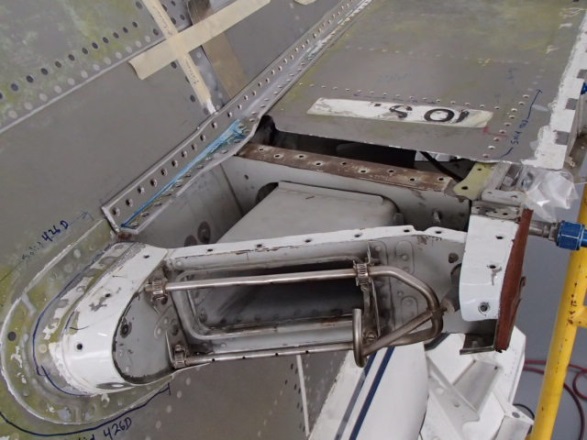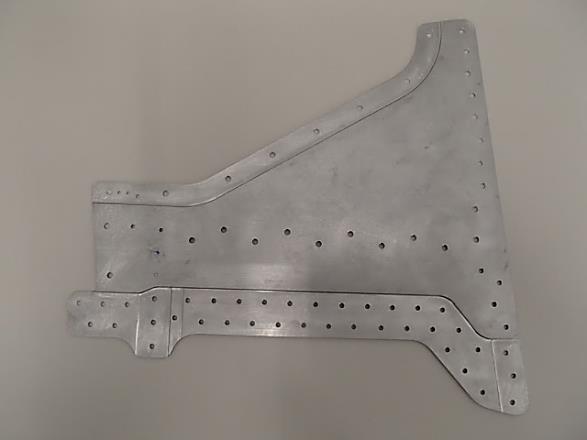Structural repairs of aircraft components on aircraft that are certified under 'damage tolerant' regulations can be complicated. To properly repair them takes a considerable amount of teamwork, detailed oversight, and open communication between all involved. The following is a recent account of one such event.
First let me explain what is meant by 'damage tolerant.' Since the late 1970s, because of significant developments in the area of structural fatigue and fail-safe strength evaluation of transport category aircraft, structural designs changed to meet the requirements of FAR 25.571 - Damage tolerance and fatigue evaluation of structure, a new qualification standard for aircraft structure. The structure is judged to be 'damage tolerant' which is the attribute of the structure that permits it to retain its required residual strength for a period of use after the structure has sustained a given level of fatigue, corrosion, or accidental or discrete source damage. To meet this requirement the structure undergoes extensive fatigue evaluation and testing along with an in-depth analysis to develop the proper inspection program (for both the proper level and interval of inspection) to find defects before they become critical to the safety of the aircraft. Repairs to the primary aircraft structure have to meet this same criteria, which makes it more challenging for repair shops that perform them.
Duncan Aviation recently completed a structural repair of an engine pylon upper skin. An area of exfoliation corrosion was found in the forward edge of the skin during the aircraft inspection. The corrosion was very extensive, causing a hole through the entire panel that weakened it. This repair required the combined experience of several Duncan Aviation teams to complete.

The repair called for cutting and removing the forward section of the skin panel aft of Frame 25. A new skin panel section was to be fabricated that included the splice doubler to be machined into the new skin panel to join it to the existing pylon skin.

The Duncan Aviation structures and airframe teams worked together to remove components to access the repair area. Once accessed, the upper fuselage-to-pylon skin attachment angle was loosened and repositioned. Cutting the old skin was challenging because it extended under the attachment angle and nearly contacted the fuselage skin. Neither the attachment angle nor the fuselage skin could be damaged while making the cut.

Fabrication of the new replacement skin panel required detailed communication between the Duncan Manufacturing solutions, Structures personnel, and the aircraft manufacturer's structural engineering team to insure the new skin panel would be machined properly. Additional structural parts had to be fabricated to complete the repair

With the machining complete, the structural repair team completed the final trimming of the new skin panel to the existing pylon skin. New fastener holes were drilled to attach the new panel to the existing pylon panel. Proper protections were applied to the newly fabricated parts and a conformity inspection was completed. The new skin panel and parts were installed on the pylon, joining the two skin panels together as one panel, very much as it was originally designed to restore the original residual strength. All of the removed items were installed and the final inspection was completed.
December 2025
November 2025
November 2025
October 2025
September 2025